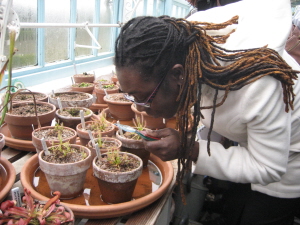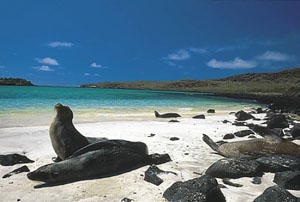- KS2 (7-11) Darwin Inspired Learning
- KS3 (11-14) Darwin Inspired Learning
- Post-16 Darwin Inspired Learning
Make a donation
Help us make the ordinary extraordinary for children, young people and teachers.
KS3 (11-14) Darwin Inspired Learning
 The Charles Darwin Trust has developed four KS3 modules for teachers to explore the work of Darwin with their classes, provided free of charge. Each module consists of three lessons. Introduction document and using these modules.
The Charles Darwin Trust has developed four KS3 modules for teachers to explore the work of Darwin with their classes, provided free of charge. Each module consists of three lessons. Introduction document and using these modules.
Being out-of-doors and having time to think were pivotal to Darwin’s work and many of the activities are structured around an outdoor learning experience. Pupils need to know where to look, observe closely and learn to interpret what they see. On their visit, students should be enouraged to collect evidence and data in different ways.
Health and safety: Teachers should read the appropriate local authority and school guidelines. Before making a visit you should carry out a risk assessment and a preliminary visit. Where a specific issue has been anticipated it is highlighted in the Lesson Plan.
Module 1 - Bees
To convince others of evolution through natural selection, Darwin showed that comb building had evolved in small steps over long stretches of time. He worked with beekeepers to share knowledge and to develop his big idea that it is the instinct of bees and not guidance from a deity that prompts bees to use wax very efficiently. They build wax into spheres at set distances to produce hexagonal cells with interlocking bases for strength and capacity.
Module 2 - Artificial Selection
 Central to Darwin’s theory of evolution was that species could change over time. A significant line of evidence came from his work with rabbits as both wild and pet rabbits were plentiful. Darwin saw artificial selection by breeders, to produce specific characteristics, as analogous to natural selection.
Central to Darwin’s theory of evolution was that species could change over time. A significant line of evidence came from his work with rabbits as both wild and pet rabbits were plentiful. Darwin saw artificial selection by breeders, to produce specific characteristics, as analogous to natural selection.
Module 3 - Hedgerows

Darwin planted his hedge in 1846. His initial list of plants became a baseline when 20 years later he recorded the disappearance of some species and new plant arrivals. He understood the consequent changes to the ecology of this hedge. Darwin theorised from evidence derived from simple, small-scale, experiments to formulate laws of nature that apply to present day scientific understanding.
- Lesson plans
- Whiteboard
- Video
Module 4 - Sustainability and Extinction
 Darwin visited the Galapagos Islands in 1835. Students are introduced to the effects of human activity on vulnerable habitats as they examine the connections between the Galapagos wildlife Darwin would have seen and the recent impact of humans. Students consider the reasons why isolated populations are most likely to become endangered or extinct and the ways in which conservation might overcome some of the threats.
Darwin visited the Galapagos Islands in 1835. Students are introduced to the effects of human activity on vulnerable habitats as they examine the connections between the Galapagos wildlife Darwin would have seen and the recent impact of humans. Students consider the reasons why isolated populations are most likely to become endangered or extinct and the ways in which conservation might overcome some of the threats.


